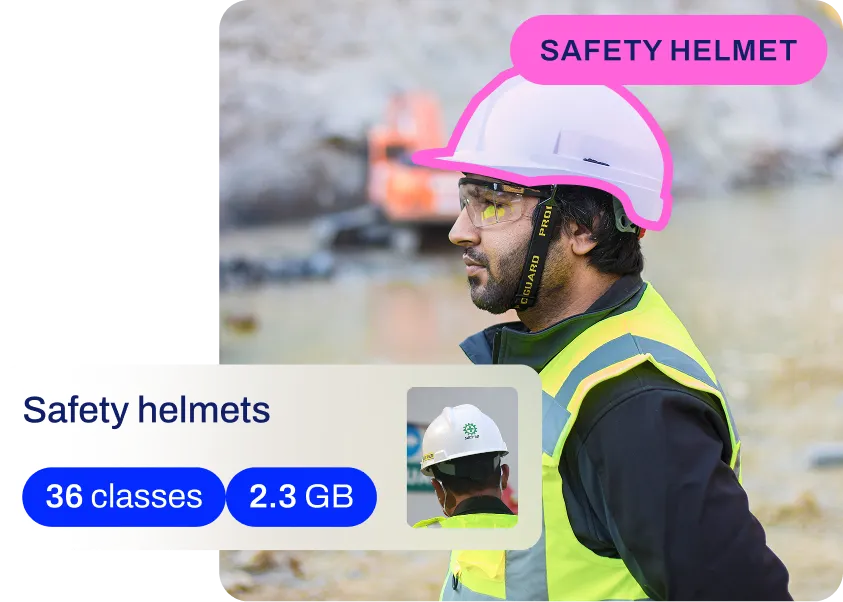LoRA (Low-Rank Adaptation)
Discover how LoRA fine-tunes large AI models like YOLO efficiently, reducing costs and enabling edge deployment with minimal resources.
LoRA, or Low-Rank Adaptation, is a revolutionary technique in the field of
machine learning (ML) designed to fine-tune
large pre-trained models with exceptional efficiency. As the size of modern
foundation models has exploded—often containing
billions of parameters—retraining them for specific tasks has become computationally prohibitive for many researchers
and developers. LoRA addresses this by freezing the original
model weights and injecting smaller, trainable
low-rank matrices into the architecture. This approach drastically reduces the number of trainable parameters,
lowering memory requirements and enabling effective model adaptation on consumer-grade hardware like a standard
GPU (Graphics Processing Unit).
How LoRA Works
The core innovation of LoRA lies in its ability to bypass the need for full model retraining. In traditional
fine-tuning, every weight in a neural network is
updated during backpropagation, which requires storing massive optimizer states. LoRA, however, keeps the pre-trained
model fixed. It introduces pairs of rank-decomposition matrices into specific layers, typically within the
attention mechanism of
Transformer architectures.
During the training process, only these small adapter matrices
are updated. Because these matrices are "low-rank"—meaning they have significantly fewer dimensions than the
full model layers—the computational overhead is minimal. This concept borrows from
dimensionality reduction principles,
assuming that the adaptation to a new task relies on a low-dimensional subspace of the model's parameters. This makes
LoRA a cornerstone of
Parameter-Efficient Fine-Tuning (PEFT), allowing for the creation of task-specific models that are just a fraction of the size of the original checkpoint.
The following Python snippet demonstrates how to initiate a standard training run using the
ultralytics package. While this command performs full training by default, advanced configurations can
leverage PEFT techniques like LoRA to optimize the process for specific
custom datasets.
from ultralytics import YOLO
# Load a pre-trained YOLO11 model
model = YOLO("yolo11n.pt")
# Train the model on a specific dataset
# LoRA strategies can be applied to freeze the backbone and train adapters
results = model.train(data="coco8.yaml", epochs=5, imgsz=640)
Real-World Applications
The efficiency of LoRA has unlocked new possibilities across various domains of
Artificial Intelligence (AI).
-
Customized Large Language Models (LLMs): Organizations use LoRA to adapt general-purpose
Large Language Models (LLMs) for niche
industries. For instance, a legal firm might train a
chatbot on proprietary case files. The
original Microsoft LoRA paper demonstrated that this method maintains
performance comparable to full fine-tuning while reducing storage needs by up to 10,000 times.
-
Generative AI Art: In the realm of
generative AI, artists utilize LoRA to teach image
generation models like Stable Diffusion new
styles, characters, or concepts. By training on a small set of images, they create lightweight "LoRA
files" (often just a few megabytes) that can be plugged into the base model to alter its output style
dramatically.
-
Efficient Computer Vision: For tasks like
object detection, engineers can adapt powerful
vision models to detect rare objects or specific defects in
manufacturing quality control. This is
crucial for edge deployment where devices have limited memory. Future architectures, such as the upcoming
YOLO26, aim to further integrate such efficiency for
real-time applications.
LoRA vs. Related Concepts
To fully understand LoRA, it is helpful to distinguish it from other adaptation strategies:
-
Full Fine-Tuning: This traditional method updates all parameters of a model. While it allows for maximum plasticity, it is
resource-intensive and prone to "catastrophic forgetting," where the model loses previously learned
knowledge. You can explore
model training tips to manage these
challenges.
-
Prompt Engineering: Unlike LoRA, which modifies model weights (via adapters), prompt engineering focuses on crafting effective text
inputs to guide a frozen model's behavior. It requires no training but may be limited in handling complex,
domain-specific tasks compared to weight adaptation.
-
Transfer Learning: This is the broader concept of taking knowledge from one task and applying it to another. LoRA is a specific,
highly efficient implementation of transfer learning.
-
Prompt Tuning: This technique learns "soft prompts" (vectors) added to the input sequence. While also
parameter-efficient, it operates on the input embeddings rather than the internal model layers, which can sometimes
limit its expressiveness compared to LoRA's deep integration.
By democratizing access to model customization, LoRA empowers developers to build specialized tools for
medical image analysis,
wildlife conservation, and
autonomous vehicles without requiring the
infrastructure of a tech giant. As the industry moves toward versatile platforms—like the upcoming Ultralytics
Platform—techniques that decouple model size from training cost will remain essential for scalable AI innovation.












